#angela baddeley
Text
Hot Vintage Stage Actress Round 2
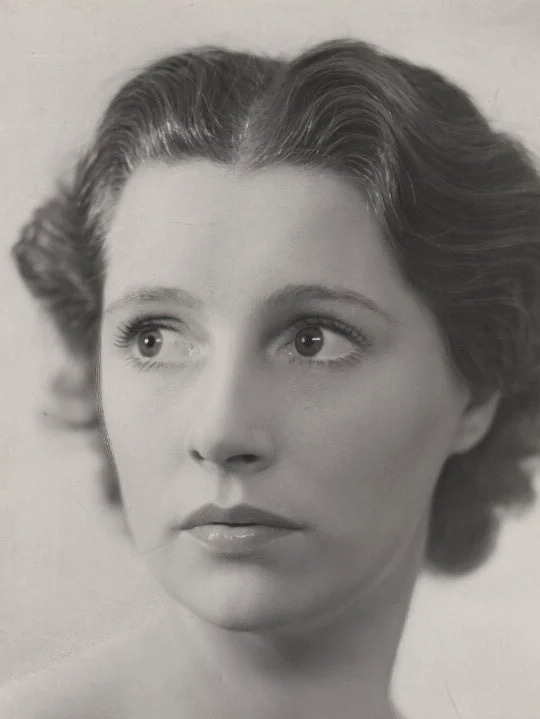
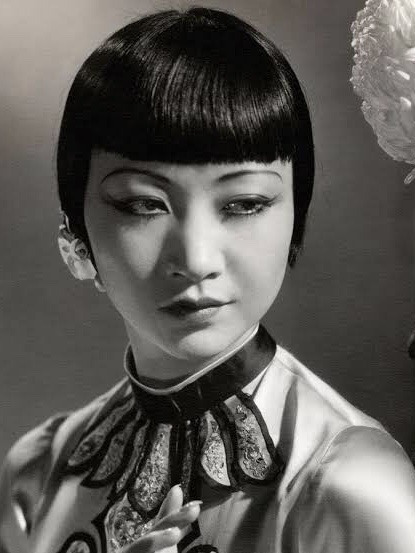
Angela Baddeley: Miss Prue in Love for Love (1943 West End); Catherine Winslow in The Winslow Boy (1946 West End); Maria in Twelfth Night (1955 Stratford)
Anna May Wong: Hai-tang in The Chalk Circle (1929 West End); Madame Lan Ying in On the Spot (1931 Broadway); Highlights from Hollywood (1939 Melbourne)
Propaganda under the cut
Angela Baddeley:
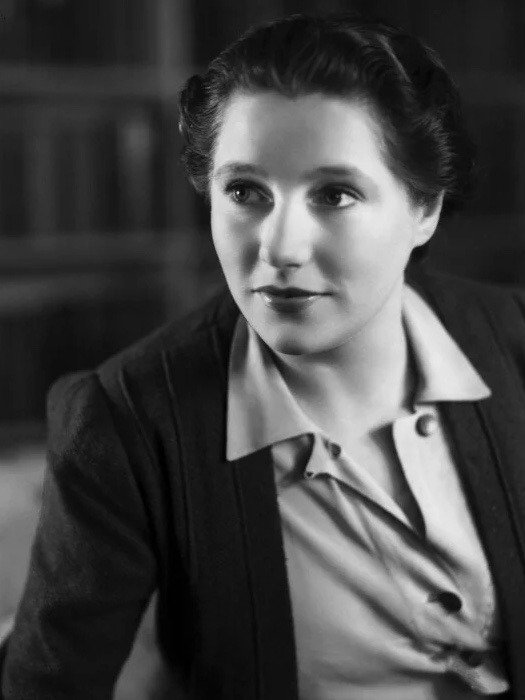
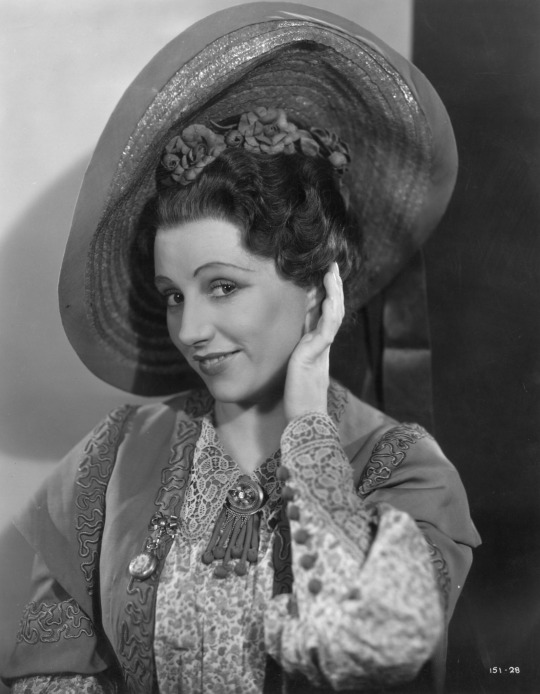
Anna May Wong:
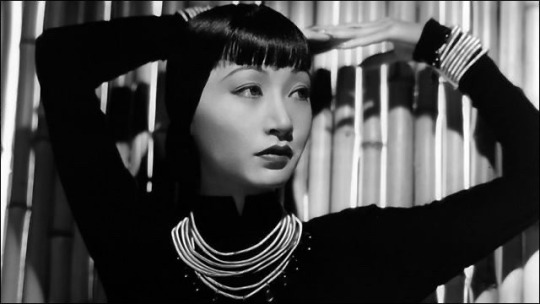
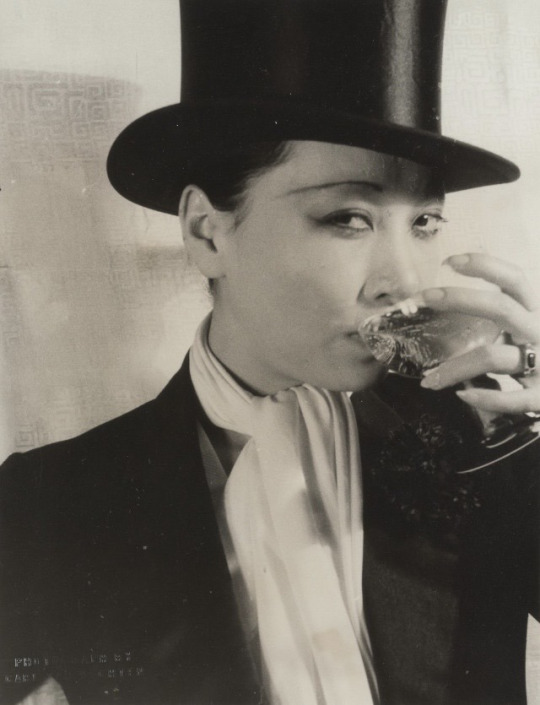
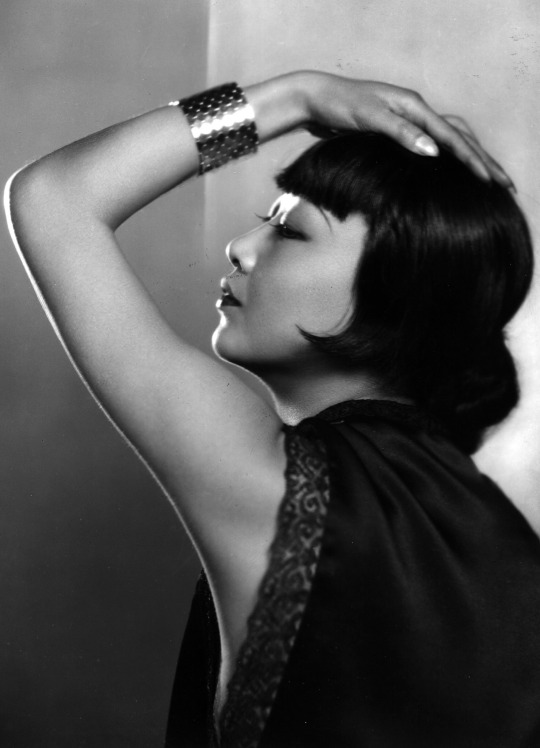

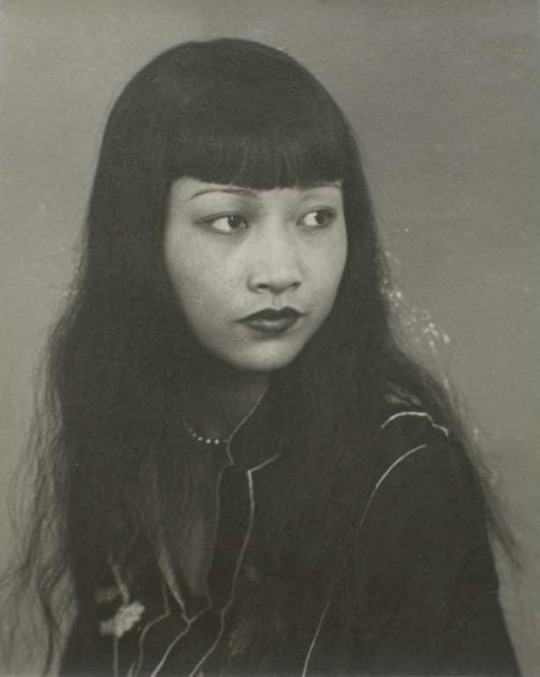


#vintagestagehotties#vintagestagepoll#vintage tournament#vintage poll#vintage ladies#angela baddeley#anna may wong#ladies round 2
11 notes
·
View notes
Photo

#upstairs downstairs#david langton#rachel gurney#pauline collins#angela baddeley#george innes#gordon jackson#evin crowley#brian osborne#patsy smart#jean marsh#edwardian#1900's#television#70's#british#1971
12 notes
·
View notes
Text

Binkie Beaumont
with Angela Baddeley & Emlyn Williams, 1947
📷 Angus McBean
#binkie beaumont#hugh 'binkie' beaumont#theatre manager#emlyn williams#angela baddeley#gay#queer#1947#1940s#40s
0 notes
Text

The actor Ian Lavender, who has died aged 77, played the awkward, impulsive Private Frank Pike in the long-running BBC comedy Dad’s Army, and was the last surviving member of the cast who portrayed Captain Mainwaring’s Home Guard platoon.
Most of the part-time soldiers depicted in the series, which ran from 1968 to 1977, were exempted from call-up to the army during the second world war because of advanced age. Pike, their junior in most cases by several decades, had been excused because of his weak chest, and always wore the scarf insisted upon by his widowed mum, Mavis.
In spite of their foibles and foolishness, Mainwaring’s pomposity and the frequent slapstick sequences, the heroes of Dad’s Army were courageous men prepared to give their lives to protect their country, and it was this innate nobility that lifted the series, written by David Croft and Jimmy Perry, to greatness. At its peak it had more than 18 million weekly viewers, and is still regularly rerun.
There were many catchphrases – Lance Corporal Jones’s “Don’t panic!”, Private Frazer’s “We’re doomed!” and Sergeant Wilson’s languid “Do you think that’s wise, sir?” – and the best-remembered belongs to the gangster movie-fixated Pike, though he did not utter it himself: Mainwaring’s weary “You stupid boy!”
Pike was also involved in Dad’s Army’s most frequently quoted joke. “What is your name?” snarls the German U-boat commander who has been captured by the platoon. “Don’t tell him, Pike,” shouts Mainwaring. There was often great subtlety in the inter-platoon relationships, best exemplified by that of Pike and Wilson (John Le Mesurier). Wilson, whom Pike calls Uncle Arthur, is Mrs Pike’s lodger, and is forever fussing around the boy, making sure his scarf is on tight and gently steering him away from danger. It was not until the end of the final series that Lavender asked Croft if “Uncle Arthur” was actually Pike’s father. “Of course,” replied Croft.
Born in Birmingham, Ian was the son of Edward, a policeman, and Kathleen (nee Johnson), a housewife; his mother often took him to see pantomimes, variety shows and Saturday morning cinema, which gave him his first ambitions to become an actor. After performing in many school drama productions at Bournville boys’ technical school he was accepted, with the help of a grant from the city of Birmingham, by the Bristol Old Vic acting school. Clearly far from being a stupid boy, he passed 12 O-levels and four A-levels. “The only reason I don’t have a degree is because I went to drama school,” he said years later.
He made his first television appearance soon after he graduated from Bristol in 1968, playing an aspiring writer whose family want him to get a proper job, in Ted Allan’s play for the Half Hour Story series, Flowers at My Feet, with Angela Baddeley and Jane Hylton.
In the same year, he was cast as Pike, joining the seasoned veterans of comedy and the classics Le Mesurier, Arthur Lowe (Mainwaring), Clive Dunn (Jones), John Laurie (Frazer), James Beck (Private Walker), Arnold Ridley (Private Godfrey) and Bill Pertwee as Air Raid Warden Hodges. Janet Davies played Mrs Pike.
While Dad’s Army catapulted Lavender to national fame at the age of 22, the role of Pike haunted him for the rest of his long career. Not that he had any complaints.
Asked in 2014 if he got fed up with a lifetime of having “stupid boy” called out to him in the street, he replied: “I’m very proud of Dad’s Army. If you asked me ‘Would you like to be in a sitcom that was watched by 18 million people, was on screen for 10 years, and will create lots of work for you and provide not just for you but for your children for the next 40-odd years?’ – which is what happened – I’d be a fool to say ‘Bugger off.’ I’d be a fool to have regrets.”
After Dad’s Army, Lavender made further television appearances, including Mr Big (1977), with Peter Jones and Prunella Scales, and in 1983 he revived Pike for the BBC radio sitcom It Sticks Out Half a Mile, a sequel to Dad’s Army, but it was not a success and lasted only one series. In contrast, the original series, with most of the regular cast, had been rerecorded for radio from 1974 to 1976 and proved very popular.
He was also in the BBC TV series Come Back Mrs Noah (1977-78), co-written by Croft; and played Ron in a new version of The Glums (1979) for London Weekend Television, adapted from Frank Muir and Denis Norden’s original radio scripts of the 1950s. There were more smallish television parts in the 80s, such as two episodes of Yes, Minister, and bits in Keeping Up Appearances, Goodnight Sweetheart, Rising Damp and Casualty. He starred in the unsuccessful BBC series The Hello Goodbye Man in 1984 and provided the lead voice in the children’s cartoon series PC Pinkerton in 1988.
He was also in various quiz shows, including Cluedo (1990). On Celebrity Mastermind, broadcast on BBC1 on New Year’s Day 2009, when the presenter John Humphrys asked him to state his name, a fellow contestant, Rick Wakeman, shouted: “Don’t tell him, Pike!”
In addition to co-starring in the first film version of Dad’s Army (1971), he appeared in various low-level British sex farces of the 1970s, including Confessions of a Pop Performer (1975), Carry on Behind (1975), Adventures of a Taxi Driver (1976) and Adventures of a Private Eye (1976). He also starred in the thriller 31 North 62 East (2009). “I was close to getting two very big movies in the 70s,” he said without rancour in 2014, “but in the end they said: ‘We can’t get past Private Pike.’”
Lavender’s second best-known role was his delicate and sympathetic portrayal of Derek Harkinson, Pauline Fowler’s gay friend, in the BBC soap EastEnders from 2001 to 2005, and again in 2016-17.
In addition to various live Dad’s Army productions, his stage work included the Royal Shakespeare Company’s The Merchant of Venice, directed by Peter Hall and with Dustin Hoffman as Shylock in 1989, touring as the Narrator in The Rocky Horror Show in 2005, Monsignor Howard in the London Palladium production of the musical Sister Act in 2009, The Shawshank Redemption at the Edinburgh fringe in 2013, and his own one-man show of reminiscences, Don’t Tell Him, Pike.
Lavender had a great admiration for Buster Keaton, and was an expert on the silent comedian’s career. In 2011 he introduced Keaton’s Sherlock Jr (1924) at the Slapstick silent comedy festival in Bristol, and commented that finding Keaton’s grave in the Fountain Lawns cemetery in Hollywood had been one of his life’s special moments.
In 2016 a new cinema version of Dad’s Army was released, with Toby Jones as Mainwaring and Bill Nighy as Wilson. Private Pike was played by Blake Harrison, and Lavender was promoted to play Brigadier Pritchard. In a touching in-joke, his younger face was also seen on an advertisement poster in a street scene.
Lavender is survived by his second wife, Miki Hardy, whom he married in 1993; by his sons, Sam and Daniel, from his first marriage, to the actor Suzanne Kershiss, which ended in divorce; and by two granddaughters.
🔔 Arthur Ian Lavender, actor, born 16 February 1946; died 2 February 2024
Daily inspiration. Discover more photos at Just for Books…?
11 notes
·
View notes
Photo



Happy Birthday To Gorgeous Forgotten British Actress Angela Baddeley
(Born 4th July 1904)
#angela baddeley#born 4th july 1904#gorgeous forgotten british actress#british films and tv#years active 1931-75#photos from 1920's#uk
10 notes
·
View notes
Text
DVD review: “Upstairs Downstairs” (1971 - 1975)
DVD review: “Upstairs Downstairs” (1971 – 1975)
“Upstairs Downstairs” (1971 – 1975)
Television/Drama

Sixty-eight Episodes
Created by: Jean Marsh, Eileen Atkins, John Hawkesworth and John Whitney
Featuring: David Langton, Rachel Gurney, Simon Williams, Nicola Pagett, Gordon Jackson, Angela Baddeley, Patsy Smart, Jean Marsh, George Innes, Evin Crowley, Pauline Collins, Christopher Beeny, Jenny Tomasin, John Alderton,Meg Wynn…
View On WordPress
#Angela Baddeley#Christopher Beeny#David Langton#dvd#dvd new zealand#dvd review#DVD reviews#dvd television#DVDReviews#Eileen Atkins#Evin Crowley#Gareth Hunt#George Innes#Gordon Jackson#Hannah Gordon#Jacqueline Tong#Jean Marsh#Jenny Tomasin#Joan Benham#John Alderton#John Whitney#Karen Dotrice#Lesley-Anne Down#Meg Wynn Owen#Nicola Pagett#Patsy Smart#Pauline Collins#Rachel Gurney#Simon Williams#Upstairs Downstairs
1 note
·
View note
Photo

Angus McBean :: ‘Binkie Pulls The Strings’ for the British journal The Tatler, 1947 - Hugh ‘Binkie’ Beaumont, theater producer, manipulating Emlyn Williams and Angela Baddeley in his production of Terence Rattigan’s The Winslow Boyfrom the previous year. / original source: Flickr
#angus mcbean#binkie beaumont#hugh beaumont#pull the strings#theater#emlyn williams#angela baddeley#article#magazine#photomanipulation#photomontage#composite#1940's
328 notes
·
View notes
Photo


Binkie Beaumont, the hugely influential yet little-known theatre producer and manager, was born on the 27th of March, 1908.
Though his early origins and family life is unclear, it is thought he was Hughes Griffiths Morgan in London. When he was 2 years old, his mother, Mary Morgan, married William Sugden Beaumont, a timber merchant from Cardiff. Hugh, as he was known, grew up in Cardiff and became known as ‘Binkie,’ which is thought to come from Cardiff slang.
At age 15, Binkie left Penarth Grammar School and went to work at the local Playhouse Theatre then soon became assistant manager at the Prince of Wales theatre in Cardiff.
His theatre career having begun in Cardiff, he moved to work in theatres in London, where he met Irish actor, playwright and theatre agent John Perry, who had been John Gielguld’s lover, but became Beaumont’s long-time partner. (John Perry died in 1995.)
In 1936, Beaumont set up H M Tennent’s with Harry Tennent, starting his successful career as a theatre producer. When Tennent died in 1941, Beaumont, in control of H M Tennent’s, became one of the most powerful theatre producers of the West End for the next 20 years, though he stayed away from the limelight, partly to have more control behind the scenes.
Hugh “Binkie” Beaumont died on the 22nd of March, 1973, aged 64. In his career, he had known and worked with Vivien Leigh, Noel Coward, Ivor Novello (and his partner Bobbie Andrews), Victor Spinetti, Richard Burton, Ingrid Bergman and many more, and had produced the first British productions of ‘West Side Story’ and ‘My Fair Lady’.
Photos via Getty Images and National Portrait Gallery. (By Angus McBean, who also was Welsh and gay, and is of Binkie Beaumont ‘pulling the strings’ of Angela Baddeley and Emlyn Williams, the Welsh and bisexual theatre actor.)
#binkie beaumont#history#theatre history#theatre#welsh history#lgbt history#queer history#welsh queer history
32 notes
·
View notes
Photo

Angela Baddeley (1904–1976)
Margaret Morris (1891–1980)
Perth & Kinross Council
1 note
·
View note
Text

Yesterday, I was finally able to see Mary Poppins Returns! For most movies, Japan has slightly later release dates so I had to wait for a bit. But I wanted to put my thoughts into a post while the movie is still fresh in my mind 😁 This will be over two posts, so it’s not one long stream of rambling 🤣
None of the GIFs or pictures posted belong to me. Credit to the makers of them 💗

Mary Poppins would like to inform you that there will be spoilers for Mary Poppins Returns so, if you haven’t seen it and wish to remain unspoiled, please do not read this post!!
🚨 SPOILER ALERT 🚨

Let talk about the characters:
I liked how the eldest kids (John and Annabel) are the opposites of Jane and Michael from the first movie. Here we have two children who have had to grow up quickly due to the loss of their mother and they become surrogate parents to the wild Georgie. Mary Poppins has not only returned to help Jane and Michael; she’s there to look after ALL of the Banks children and help John and Annabel be children again. Georgie has no problems being a child and his innocent remarks throughout the film are some of the best comedic moments.

Upon seeing the trailer, I thought Jack was just going to be a Bert 2.0 and, in a way, he is. Most of the characters are the 2.0 versions from the first Mary Poppins. While we didn’t know too much about Bert’s story, we know quite a bit about Jack. He’s a lamplighter (a leerie) who was apprenticed under Bert and met Mary Poppins when he was younger. Rather than flirting with Mary Poppins, he acts like a nephew whose favourite aunt has come into town. The world of lamplighting has it’s own magic and Lin Manuel Miranda does an amazing job of bringing Jack and that magic to life. He definitely does a better Cockney accent than Dick Van Dyke as well 🤣
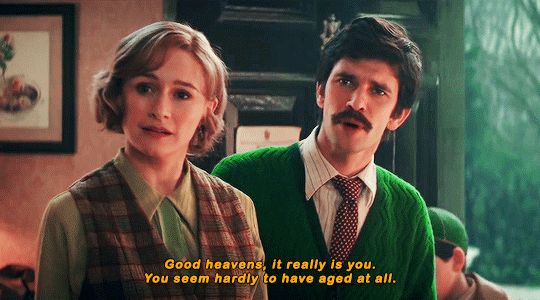
Michael has been through a lot in the last 25 years. He’s lost his wife and he’s struggling to keep it together but does so for the children. He finds himself turning into his father after the bank (the same bank his father was a senior partner and where Michael now works) is threatening to take the house. I thought Ben Whishaw played him beautifully. The first film never really portrayed George Banks in a sympathetic light, so this film differs slightly in that Michaels behaviour and outbursts are the result of tragedy. On the other hand, Jane definitely has been taking after her mother. She’s campaigning on behalf of the underpaid workers, working at soup kitchens and taking part in labour rallies. Emily Mortimer retains the sweet nature which Karen Dotrice brought to the role whilst adding her own flare. One aspect that’s been a bit controversial amongst tumblr users is the relationship between Jack and Jane. With her political attitudes and her wardrobe, Jane has been taken by some to be a part of the LGBTQ+ community. However, one of the films subplots is a budding romance between Jack and Jane. In my opinion, I loved the romance. It was pure, sweet and a genuine joy to watch. However, I know some people took their interactions as platonic. I just think it’s a testament to Mortimer’s and Miranda’s acting that fans can interpret the character and the relationship in different ways. I think no one is correct: we can each have opinions on the character and it prompts for interesting discussion as a whole.

I’ll just briefly touch on the other characters before the main attraction. Colin Firth is particularly good as the primary antagonist; William “Weatherall” Wilkins is the nephew of Mr. Dawes Jr (portrayed by Arthur Malet in Mary Poppins). Brits always do well at portraying villains and Firth is no exception. Julie Walters takes on the role of Ellen (portrayed by Hermione Baddeley in Mary Poppins). She’s delightful for a bit of comedy relief and ties nicely to the first film.

Now, he’s where I’m a bit conflicted. Meryl Streep plays Topsy; Mary Poppins’ Russian cousin who owns a fix-it-all shop. She’s essentially Uncle Albert 2.0 except, rather than floating on the ceiling, her entire shop turns upside down (literally) every second Wednesday. I don’t know how to feel about her role in the story. The gang go to Topsy to fix a bowl which the children plan to sell to help save their house. The whole segment she’s in teaches the children to look at things from a different point of view and they then decide to not proceed with selling the bowl. I felt it was a bit of an unnecessary part of the movie and would have rathered they had maybe Jane or Ellen teaching them the lesson, rather then try to get their money’s worth with Meryl.

Ahh, the cameos! The biggest one is, of course, Dick Van Dyke as Mr. Dawes Jr. It’s a great moment and really brings together the two films. Karen Dotrice (Jane in MP) makes a blink-and-you’ll-miss-it cameo when she bumps into Jack and Jane and asks for directions. The best surprise was Angela Lansbury (Mrs. Potts from the animated Beauty and the Beast) as the Balloon Lady; this movie’s version of the Bird Lady. She was just a delightful and warm character.
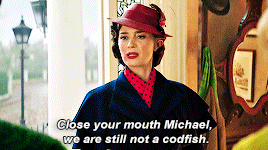
... and finally, the reason we’re all here. I was exceptionally worried going into this because I loved Julie Andrews’ character so much. The one thing Emily Blunt does spectacularly is she doesn’t try to be Julie Andrews. She uses some of her lines and is a firm nanny, but she really makes the character her own. In the first Mary Poppins, we see a break in her tough shell at the end when she’s leaving the children. In this film, her facade breaks quite a few times but I think it shows character development. This is the second time, that we know of, Mary Poppins has visited and helped the Banks Family so she’s as much a member of it as the children are. Her emotions are much more on her sleeve in this film as much as the character tries to hide them. At the moment, I think of them as two separate characters which I don’t think is a bad thing. Both Dame Julie Andrews and Emily Blunt have taken a remarkable character and portrayed her to a high standard with just the right amount of wit, magic and British stiff upper lip.
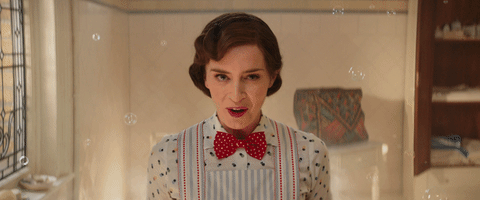
I’m going to finish there for this post 😴 Let me know what you thought about the film and whether you agree or disagree with anything I’ve said. Always up for a discussion 😊
#disney#mary poppins returns#mary poppins#jack the lamplighter#jack#michael banks#jane banks#emily blunt#lin manuel miranda#ben whishaw#emily mortimer#colin firth#meryl streep#julie walters#dick van dyke#julie andrews#karen dotrice#jane x jack#jane banks x jack#jack x jane#mary poppins returns spoilers#spoilers
26 notes
·
View notes
Text
Hot Vintage Stage Actress Round 1
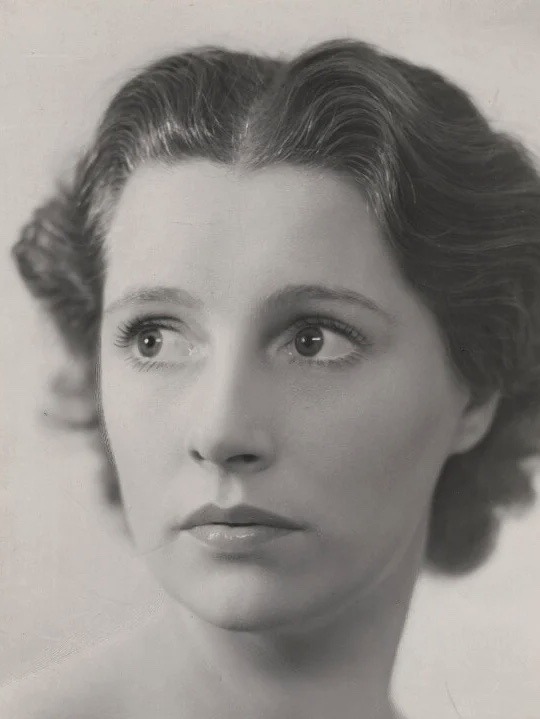

Angela Baddeley: Miss Prue in Love for Love (1943 West End); Catherine Winslow in The Winslow Boy (1946 West End); Maria in Twelfth Night (1955 Stratford)
Dame Marie Tempest: Katherine "Kitty" Silverton in The Marriage of Kitty (1902 West End); Penelope in Penelope (1909 West End); Judith Bliss in Hay Fever (1925 West End)
Propaganda under the cut
Angela Baddeley:
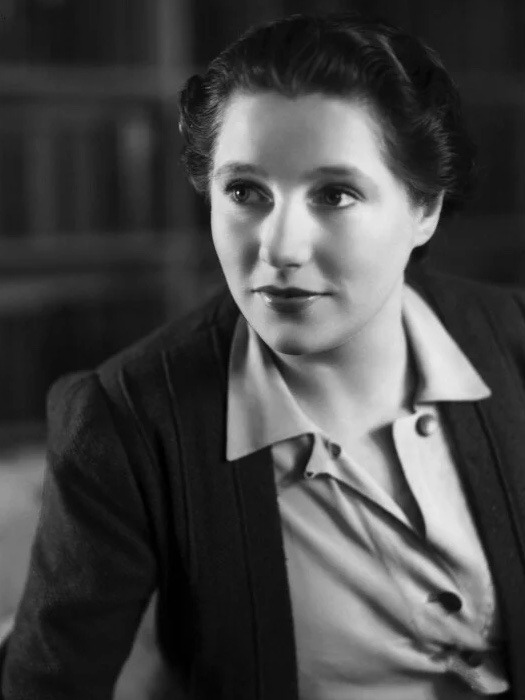
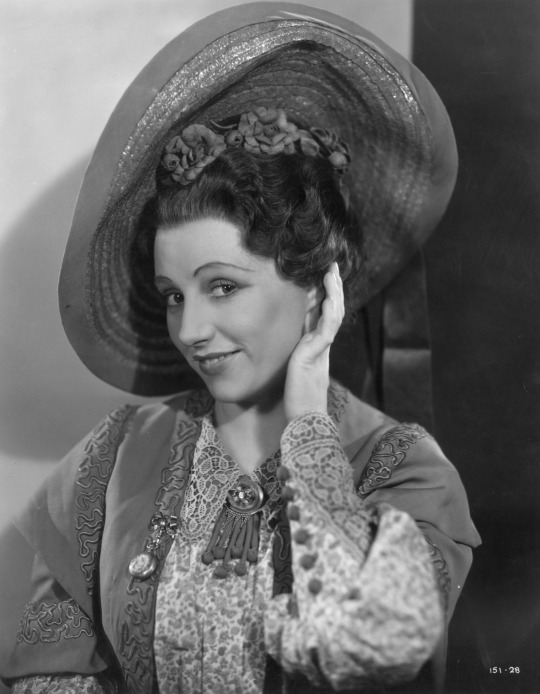
Marie Tempest:

#vintagestagehotties#vintagestagepoll#vintage tournament#vintage poll#angela baddeley#marie tempest#ladies round 1#vintage ladies
9 notes
·
View notes
Photo

#upstairs downstairs#angela baddeley#rachel gurney#david langton#70's#television#edwardian#british#1900's#early 70's#1972
3 notes
·
View notes
Photo

#angela baddeley
WELL, YEAH
We post pinups daily! If you dig this pic we’ve found online, u should investigate the creator/subjects of the above work and fan them, follow them, hire them.
If you’d like us to remove, or you know who made this so that we can credit, DM. Thanks. Greetings from Los Angeles.
DrRubinsPomade.com
0 notes
Photo

Angela Baddeley (1904–1976) [1917]
Margaret Morris (1891–1980)
Perth & Kinross Council
59 notes
·
View notes
Text
Dr. Death’s victim list
Acton, Lily
Adams, Lizzie
Adkinson, Sarah
Adshead, Norman
Adshead, Rose Ann
Aitken, Irene
Andrew, Dorothy Mary
Andrew, Joseph
Andrew, Mary Emma
Arrandale, Albert
Arrowsmith, Winifred
Ashcroft, Netta
Ashton, Dora Elizabeth
Ashton, Ellen
Ashworth, Ada
Ashworth, Brenda
Ashworth, Elizabeth
Ashworth, James
Ashworth, Sarah
Aveyard, Clara Ethel
Baddeley, Elizabeth Mary
Baddeley, John
Bagshaw, Bertha
Barber, Squire
Bardsley, Joseph
Bardsley, Lily
Bardsley, Nellie
Barker, Elsie
Barlow, Charles Henry
Barnes, James Edward
Battersby, Elizabeth
Baxter, William
Beech, Joseph
Bell, Norman John
Bennett, Ethel
Bennett, Frances
Bennett, Nellie
Bennison, Charlotte
Bent, Arthur
Berry, Irene
Bill, Edith Annie
Birchall, Mary Ivy
Bird, Violet May
Black, Alice
Boardman, Kathleen May
Boardman, Mary Louisa
Bogle, Geoffrey
Bolland, Alice
Bowers, Mary Elizabeth
Bradshaw, Miriam
Brady, Edith
Bramwell, Harold
Bramwell, Vera
Brassington, Charles Geoffrey
Brassington, Nancy Anne
Bridge, Doris
Bridge, Jane
Brierley, Albert
Brierley, Edith
Broadbent, Lily
Brock, Edith
Brocklehurst, Charles Edward
Brocklehurst, Vera
Brooder, Irene
Brookes, Lily
Brookes, May
Brown, Alice
Brown, Mary Alice
Brown, William Henry
Buckland, Edward
Buckley, Ethel
Burke, Elizabeth Mary
Butcher, Lydia Edith
Cains, Ida
Callaghan, Sean Stuart
Calverley, Edith
Campbell, Annie
Carradice, Marion
Carrington, Alice
Carroll, Josephine May
Cartwright, Hannah
Chadwick, Wilfred
Challinor, Ivy Elizabeth
Challoner, Genevieve
Chapman, Irene
Chappell, Alice
Chappell, Wilfred
Charlton, John
Charnock, George
Cheetham, Albert
Cheetham, Alfred
Cheetham, Elsie
Cheetham, Hena
Cheetham, Norah
Cheetham, Thomas
Chidlow, Amy
Clarke, Fanny
Clayton, Elsie
Clayton, Frances
Clee, Beatrice Helen
Clough, James
Condon, Thomas
Connaughton, Alice Hilda
Connors, Michael
Conway, Margaret Ann
Coomber, Frederick
Cooper, Ann
Copeland, Erla
Copeland, Sydney Hoskins
Couldwell, Constance Anne
Coulthard, Ann
Coutts, Mary
Couzens, Hilda Mary
Cox, Eileen Theresa
Crompton, Eileen Daphne
Crompton, Frank
Crompton, John
Crossley, Lily
Cullen, Lilian
Cuthbert, Valerie
Davies, Cissie
Davies, Eric
Davies, Fred
Davies, Miriam
Dawson, Fanny
Dean, Elsie Lorna
Dean, Joan Edwina
Delaney, Bessie
Denham, Christopher
Dentith, Frederick
Devenport, Ronnie
Dixon, Alice
Dobb, Edgar
Dolan, Ethel
Drinkwater, Alice
Drummond, Joseph
Dudley, Mary Rose
Dutton, Elaine
Earls, Doris
Earnshaw, William
Eddleston, Harold
Eddleston, Monica
Edge, Agnes
Evans, Bethel Anne
Everall, Hannah
Everall, Joseph Vincent
Farrell, Phyllis
Fernley, Marie Antoinette
Firman, Mary Elizabeth
Fish, Hilda
Fitton, Hilda
Fletcher, Dorothy
Fletcher, Elizabeth
Floyd, Arthur
Fogg, Leah
Foulkes, Edwin
Fowden, Thomas
Fox, Moira Ashton
France, John
Freeman, Harold
Freeman, Winifred
Frith, Hannah
Galpin, Minnie Doris Irene
Garlick, Rose
Garlick, Violet
Garratt, Mary Alice
Garside, Millicent
Gaskell, Marion
Gaunt, Mary
Gee, Nellie
Gess, Clifford
Givens, William
Goddard, Edith
Godfrey, Elsie
Golds, Annie Elizabeth
Gorton, Alice Maude
Graham, Edith
Gray, Rebecca
Greenhalgh, John Sheard
Grimshaw, Annie
Grimshaw, Muriel
Grundy, Donald Anthony
Grundy, Kathleen
Grundy, Nora
Hackney, Clara
Hackney, Clara
Hadfield, Violet
Hague, William
Hall, Josephine
Halliday, Frank
Hallsworth, Janet
Hamblett, Leonora
Hamer, Mary Emma
Hammond, Caroline Veronica
Hampson, Jesse
Hancock, Christine
Hannible, Elsie
Harding, Joan Milray
Harris, Charles
Harris, Harriet
Harrison, Christina
Harrison, David Alan
Harrison, Marion
Harrison, Muriel Eveline
Harrison, Samuel
Harrop, Elsie
Haslam, Mary Elizabeth
Hawkins, Sarah
Healey, Winifred
Heapey, Clifford Barnes
Heapey, Gladys
Heathcote, Irene
Heginbotham, Olive
Hennefer, Ellen
Hett, Mary Jane
Heywood, Ada
Heywood, Florence
Hibbert, Hilda Mary
Hickson, Robert
Higginbottom, George Eric
Higginbottom, Peter
Higgins, Barry
Higgins, Lily
Higham, Marion Elizabeth
Highley, Ruth
Higson, Ellen
Hill, Sarah Ann
Hillier, Pamela Marguerite
Hilton, Ada Matley
Hilton, John
Hirst, Emma
Holgate, Ethel Doris
Holland, Alline Devolle
Holt, Alice
Hopkins, Dorothy Doretta
Howcroft, John
Hulme, Hilda
Hurd, May
Iwanina, Jozef
Jackman, Harold Edward
Jackson, Maureen Lamonnier
Jackson, Nancy
Jameson, Ronald
Jeffries, Beatrice
Johnson, Norah
Johnson, Richard
Johnston, Leah
Jones, Alice Mary
Jones, David
Jones, Hannah
Jones, Ivy
Jones, Jane
Jones, Robert Edward
Jordan, Mary Ellen
Keating, Mary
Kellett, Ethel May
Kellett, Fred
Kelly, Ellen
Kelly, Moira
Kennedy, Alice
Killan, Charles Henry
King, Elsie
King, James Joseph
Kingsley, Mary
Kitchen, Alice Christine
Lacey, Renee
Leach, Florence
Leech, Edith
Leech, William Henry
Lees, Olive
Leigh, Carrie
Leigh, Joseph
Leigh, Wilfred
Lewis, Elsie
Lewis, Florence
Lewis, Peter
Lilley, Jean
Lingard, Robert Henry
Linn, Laura Frances
Livesey, John Louden
Llewellyn, Edna May
Lomas, Harry
Lomas, Ivy
Long, Dorothy
Longmate, Thomas Alfred
Lord, Jane Ellen
Lowe, Beatrice
Lowe, Esther
Lowe, May
Lyons, Eva
MacConnell, Charles
Mackenzie, Selina
Mackie, Christina McCulloch
Mansfield, Mary Ann
Mansfield, Walter
Marley, Martha
Marsland, Sarah Hannah
Matley, Maud
McDonald, Kathleen
McLaren, William James
McLoughlin, Gertrude
Melia, Joan May
Mellor, Elizabeth Ellen
Mellor, Samuel
Mellor, Winifred
Meredith, Oscar
Metcalfe, Margaret
Middleton, Deborah
Middleton, Mary
Mills, Samuel
Mitchell, Cyril
Mitchell, Wilbert
Molesdale, John Bennett
Morgan, Emily
Moss, Bertha
Moss, Hannah
Mottram, George Henry
Mottram, Hannah Helena
Mottram, Pamela Grace
Moult, Thomas
Mullen, Nellie
Mycock, Miriam Rose Emily
Needham, Nora
Nicholls, Violet
Nichols, Fanny
Nichols, Lily
Nuttall, Hervey
Nuttall, Norah
O'Sullivan, Thomas
Ogden, Mary
Oldham, Agnes
Oldham, Samuel
Oswald, Frances Elaine
Otter, Enid
Ousey, Margaret
Ovcar-Robinson, Konrad Peter
Overton, Renate Eldtraude
Oxley, Phyllis
Parker, Marjorie
Parkes, Annie
Parkin, Laura Victoria
Parr, Bertha
Pearce, Elizabeth
Pedley, Rosetta
Penney, Vara
Pickering, Leah
Pickup, Kenneth
Pickup, Mavis Mary
Pitman, Edith
Platt, Elsie
Platt, Marion
Pomfret, Bianka
Potts, Frances
Potts, Reginald
Powers, Annie Alexandra
Preston, Ada Marjorie
Prestwich, Alice
Proud, Ethel May
Quinn, Marie
Ralphs, Anne Lilian
Ralphs, Ernest Colin
Rawling, Alice
Reade, Audrey
Redfern, Tom
Renwick, Dorothea Hill
Richards, Jose Kathleen Diana
Richardson, Alice
Riley, Stanley
Roberts, Edith
Roberts, Esther Hannah
Roberts, Gladys
Robinson, Eileen
Robinson, Eveline
Robinson, Lavinia
Robinson, Mildred
Rogers, Elizabeth Ann
Rostron, Jane Frances
Rowarth, Dorothy
Rowbottom, Annie
Rowland, Jane Isabella
Royles, Elsie
Royston, Betty
Rudol, Ernest
Russell, Tom Balfour
Sankey, Margaret
Saunders, Albert Edward
Saunders, Gladys
Scott, Edith
Scott, Elsie
Sellors, Kate Maud
Sharples, Cicely
Shaw, Joseph
Shaw, Leonard
Shaw, Lilian
Shaw, Neville
Shaw, Susan Eveline
Shawcross, Edna
Shawcross, Ernest
Shawcross, Mabel
Shelmerdine, Jack Leslie
Shelmerdine, Jane Elizabeth
Shore, Lily
Sidebotham, Florence
Sigley, Elizabeth Teresa
Simpson, Kenneth Harry
Slater, Albert
Slater, Florence
Slater, Lena Norah
Slater, May
Smith, Alice
Smith, Dora Elizabeth
Smith, Emma
Smith, Kenneth Ernest
Smith, Margaret
Smith, Mary Alice
Smith, Sidney Arthur
Smith, Winifred Isabel
Sparkes, Monica Rene
Squirrell, Alice
Stafford, Harry
Stafford, Kate Elizabeth
Stansfield, Joe Ainscow
Stocks, Louisa
Stone, John
Stopford, Arthur Henderson
Stopford, Harriet
Strickland, Ruth
Sumner, Grace
Swann, Bessie
Swann, Robert
Swindells, Emmeline
Taylor, Caroline Mary
Taylor, Edna Mary
Taylor, Florence
Taylor, Lily Newby
Taylor, Mary
Tempest, Mary Ann
Thomas, Alice
Thomas, Sarah Ann
Thornton, Maria
Tideswell, Sarah
Tierney, Angela Philomena
Tingle, Walter
Toft, Beatrice
Tomlin, Mary
Townsend, Margaret
Tucker, Dorothy
Tuff, Mary
Tuffin, Winifred Amy
Turner, Frances Elizabeth
Turner, Irene
Uttley, Stanley
Vickers, Frederick
Vickers, Margaret Mary
Virgin, Lucy
Vizor, George Edgar
Vizor, May
Wagstaff, George Lawton
Wagstaff, Jessie Irene
Wagstaff, Laura Kathleen
Waldron, Margaret Anne
Walker, Edward
Walker, Ellen
Walker, Henrietta
Walker, Winifred Mary
Waller, Harry
Waller, Marjorie Hope
Walls, Mary
Walton, Sydney
Warburton, Ada
Ward, Maureen Alice
Ward, Minnie
Ward, Muriel Margaret
Ward, Percy
Wardle, Eric
Wareing, William Hill
Warren, May
Wass, Kathleen May
Watkins, Annie
West, Maria
Wharam, Ellen Frances
Wharmby, Lavinia
White, Mona Ashton
Whitehead, Amy
Whitham, Colin
Whittaker, Maureen
Whittaker, Violet Mary
Whittingslow, Vera
Whittle, Edith
Wibberley, Edith
Wilcockson, Joseph Frank
Wilkinson, Annie
Wilkinson, Maud
Williams, Albert Redvers
Williams, Emily
Williamson, Sarah Jane
Wills, Jack
Wilmore, Margaret
Wilson, Muriel Elsie
Wimpeney, Mark
Winston, George
Winston, Olive
Winterbottom, Mary
Wood, Annie
Wood, Charles Henry
Wood, Fanny
Wood, James
Woodhead, Joyce
Woodhead, Kenneth Wharmby
14 notes
·
View notes
Photo

Angela Baddeley - Photographed By Bassano (February 27, 1922)
4 notes
·
View notes